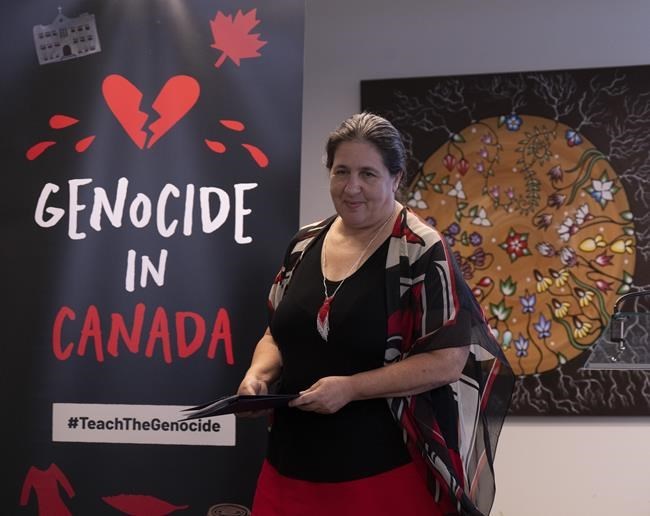OTTAWA — The Native Women's Association of Canada says it is hoping to make ugly truths about the ongoing genocide of Indigenous Peoples easier for students to see and understand with a graphic guide that could form the basis of school curriculums.
The group said it developed an easy-to-read graphic booklet in the hopes it would spur politicians into action and better educate the next generation of Canadians.
"We don't want the next group of adults not to know. We want to teach our young ones," said CEO Lynne Groulx at a press conference Monday.
Many people were shocked and confused when the national inquiry into missing and murdered Indigenous women and girls concluded that Canada as a state has contributed to a genocide of Indigenous peoples, she said.
"Those who do not constantly fear for the safety of their mothers and daughters or sisters could simply not understand how the inquiry reached its finding, and they have difficulty acknowledging the genocide or even saying the word," Groulx said.
In the four years that have passed since, she said, only two of the 231 calls for justice that accompanied that report have been implemented.
"We at NWAC have come to realize that this inaction is due to the lack of political will," she said.
The group said it plans to send the new graphic guide to every member of Parliament as well as to provincial ministers of education.
It said it seeks to "shock their consciousness" and encourage them to act, especially when it comes to recommendation 11.1 of the inquiry's final report, which called for schools to teach students "the historical and current truths about the genocide against Indigenous Peoples through state laws, policies, and colonial practices"
The booklet looks something like a comic book and lays out the legal argument that Canada has committed genocide in colourful and simple-to-follow illustrations.
The artist, Chloé Germain-Thérien, said she used watercolour for the illustrations to try to appeal to the reader's emotions, as well as their intellectual sides.
The 10-page book also dissects misunderstood elements of genocide to explain how it applies in Canada, said lawyer Fannie Lafontaine, who authored the booklet.
"Our aim in the booklet, which I hope is going to be taught to every school, is that genocide happened here in Canada in a different manner than, for example, the Holocaust," she said.
Lafontaine was also the lead writer of a supplementary report on genocide for the National Inquiry into Missing and Murdered Indigenous Women and Girls.
When many people think of genocide they imagine massacres committed by individuals, she said at the press conference Monday.
In Canada's case, the state was the perpetrator, said Lafontaine.
Rather than single massacres, she said, the genocide happened in the form of abuse, sexual assault, poor living conditions, forced or coerced sterilization and removing children from families to put them in residential schools or adopt them into non-Indigenous families.
Current curriculums don't talk about Indigenous history in terms of genocide, she said, and that needs to change for the next generation to put public pressure on political leaders to act.
"You can't sugar-coat it. You have to tell the truth," she said.
This report by The Canadian Press was first published June 19, 2023.
Laura Osman, The Canadian Press




